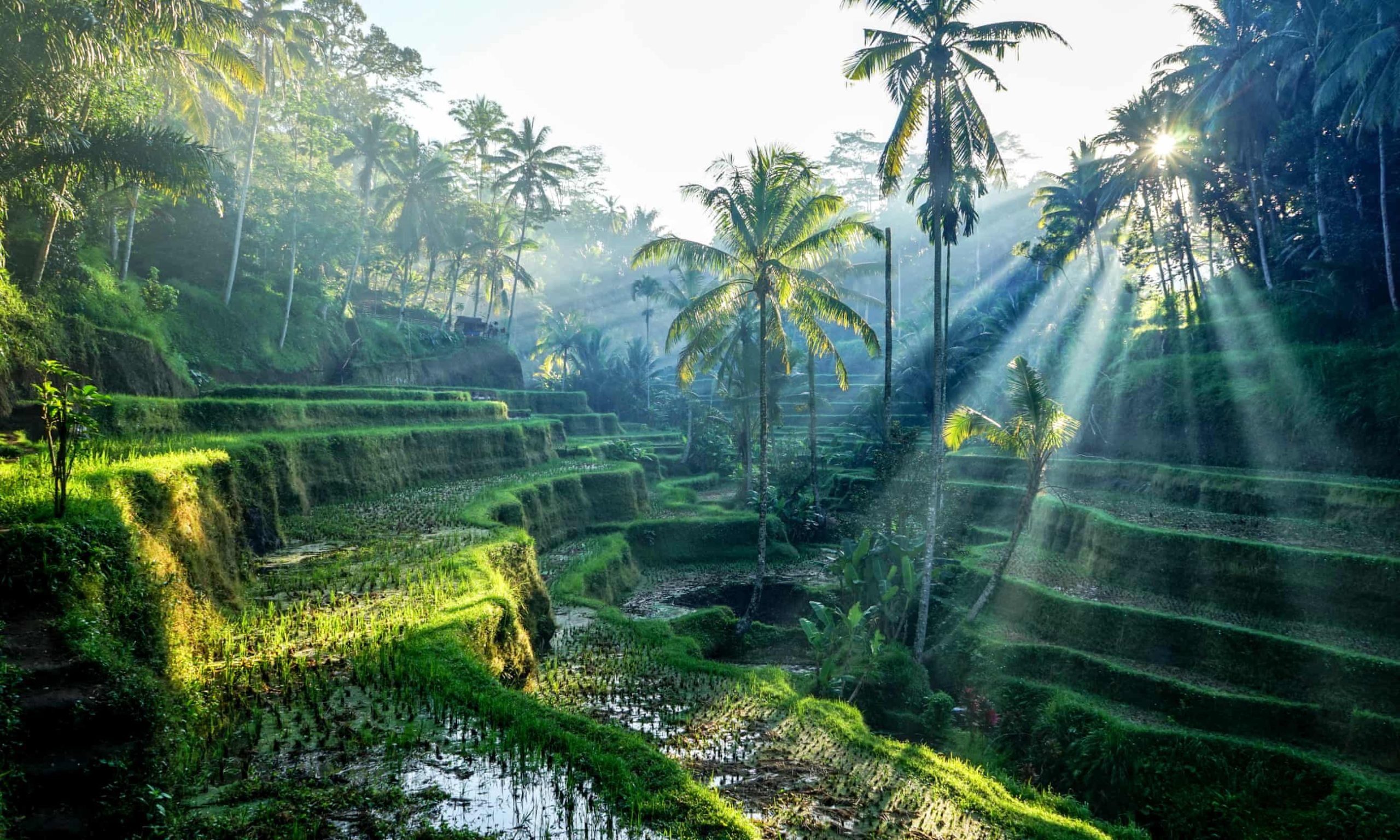
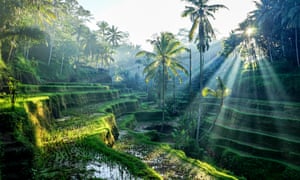
Just outside Ubud, in the uplands of Bali, a new tented camp has opened. You dip down into a valley to find a world of cistern-shaped pools, spas with trees growing through them and tents that unzip to reveal copper baths and batik-covered walls. For no discernible reason, one of the restaurants is designed to look like a laundry. Staying at the Capella Ubud tented camp comes at eye-watering cost – but you can visit for the 10-course tasting menu at its Api Jiwa restaurant (£65 a head) and be surrounded by washing machines and artful displays of irons and washboards.
At Capella Ubud’s heart is a fire pit where you toast marshmallows while a screen shows vintage film of Bali, including Charlie Chaplin’s 1932 visit to the island, a black-and-white montage of full-on jerky, flickering nostalgia. Chaplin came here to be re-energised after a bruising reception for his 1931 film, City Lights.
In 2006, the island found itself on the culture radar again after Eat Pray Lovewas published, and Ubud was inundated by Elizabeth Gilbert acolytes in search of enlightenment and hot Brazilian gemstone dealers.
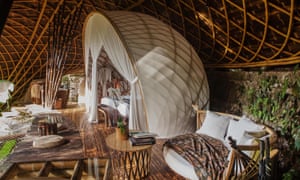
Now Ubud has digital nomads, and high-concept restaurants are a thing. At Room 4 Dessert, chef Will Goldfarb, fresh from an airing on Netflix’s Chef’s Table, just does puddings, presenting them around a bar designed to look like a 19th-century bordello. A dessert tasting menu, which can be paired with flights of cocktails, starts at £43 for two people.
“Bali has incredible ingredients, you can grow nearly everything,” he tells me over a Jitterbug Perfume, which features jasmine, beet, lemons and melon, while, outside, gardeners plant rows of herbs and fruits.
Even today, part of Bali’s appeal is that it doesn’t really do cookie-cutter anything; the variety here is infinite. On this Hindu island in the largely Muslim Indonesian archipelago, you can opt for luxury at somewhere like Capella Ubud, or you can spend £15 a night in a hostel. Essentially though, everyone comes to Bali for the same reason: the sensory overload.
Locals complain, rightly, that land prices have become too expensive, and that the infrastructure – especially roads – struggles to cope. After the 2002 and 2005 bombings security is still intense, especially at hotels. Bali has all the over-development of a country that has hit tourist paydirt, but despite the Chinese bridal parties posing by its ruined palaces, and the tat at the optimistically named Ubud Art Market, Bali still has soul – especially here, away from the coast.
Wander into the Ubud Monkey Forest and you’ll get temples and ravines in a rainforest setting. In the centre of town, the palace and its temple, dating from the early 19th century, is where mass tourism meets moss and a sense of timelessness.

If you travel further out, there are coffee plantations and volcanoes. But there’s plenty to keep you closer to Ubud itself. Head into the hills and you’ll find terraced rice fields in gradients of vivid greens. In every village are shrines wrapped in fabric, topped with umbrellas. As much as its temples and palaces, Ubud is about the countryside. A path next to Pura Gunung Lebah temple leads you to the Campuhan Ridge Walk, a 9km trek that dips in and out of the verdant Sungai Wos Valley.
Keliki, north of Ubud, is a village with a significant artistic heritage. “We’re the Where’s Wally? of the art world,” says Wayan, one of the teachers, which makes light of the highly detailed nature of the drawings created in the village. On a Saturday morning the compound is full of boys having a lesson, which they submit to with varying degrees of enthusiasm, producing both religious art and landscapes that feel as lush and as intricate as Ubud itself. “We only started doing this in the 1970s, but we don’t want to lose it,” says Wayan, pointing at the boys. Prices start at about £8 and rise to £200, divided between the artist and the school.
At Sayan village, craft enthusiasts come to Gaya Ceramics. This design studio has been in situ since 2001. You can easily drop a few hundred pounds here on the sculptural, useful objects – including tableware and vases – but it’s a teaching facility too, featuring artists in residence and collaborations with designers, hotels, restaurants and fashion brands.
Sayan is also home to Bambu Indah, the most radical of Ubud’s hotels. It’s made up of small houses constructed almost entirely from bamboo, which, when treated, has the same strength as tensile steel, an architect earnestly tells me. The result is woven into cocoon-like buildings and set into the rainforest.
Rates are reasonable – they start at £84 a night – but all the frills are in place. There’s a series of natural swimming pools fed by spring water and the restaurant’s food is largely organic.
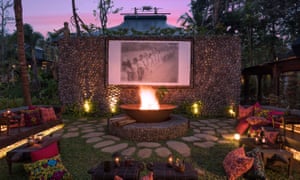
My own hotel, a 20-minute drive away from the centre of Ubud, is the Alila, which is surrounded by paddy fields and has its own half-mile drive. A private stepped path leads me to my villa. It is from one of the cheaper options, but it still features an outdoor shower and a wooden deck overlooking the rainforest.
The Alila has all the trappings of proper luxury: a swimming pool juts out into the valley, with a temple on one side and a monkey-filled forest cascading down on the other. There is a spa with its own skincare brand, cookery classes and a sculpture garden for yoga and meditation.
And like the Capella Ubud, there’s something more: if there’s a rising hotel trend in Bali at the moment, it’s a sense of fun. Once upon a time, hotels had excursions. Now, especially in Bali it seems, they are billed as experiences and are altogether more enjoyable. The Alila Ubud offers a drive in a Volkswagen Type 181 – aka Trekker in the UK and Thing in the US – a creaky convertible made between 1968 and 1983. Children laughed as we went by, but as the car throbbed and juddered, we passed rice fields, ravines and temples, and Bali delivered its sensory overload.
The Guardian

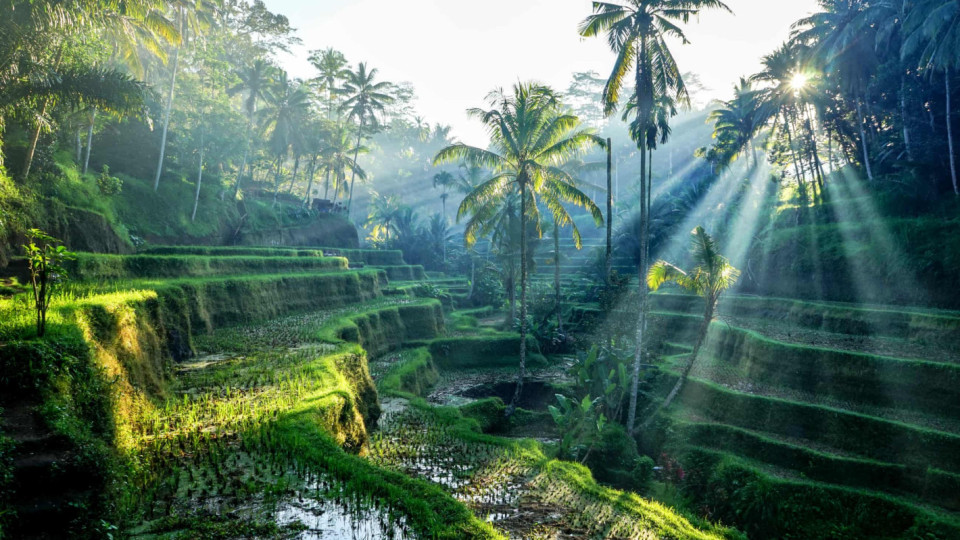
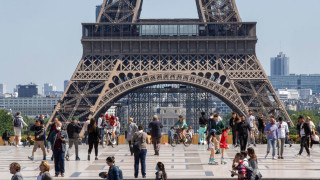





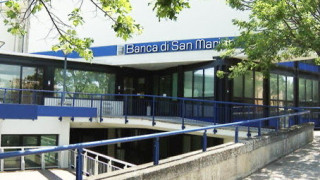


Leave a comment